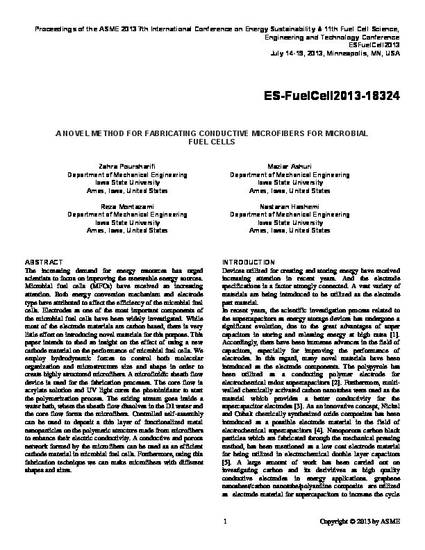
The increasing demand for energy resources has urged scientists to focus on improving the renewable energy sources. Microbial fuel cells (MFCs) have received an increasing attention. Both energy conversion mechanism and electrode type have attributed to affect the efficiency of the microbial fuel cells. Electrodes as one of the most important components of the microbial fuel cells have been widely investigated. While most of the electrode materials are carbon based, there is very little effort on introducing novel materials for this purpose. This paper intends to shed an insight on the effect of using a new cathode material on the performance of microbial fuel cells. We employ hydrodynamic forces to control both molecular organization and microstructure size and shape in order to create highly structured microfibers. A microfluidic sheath flow device is used for the fabrication processes. The core flow is acrylate solution and UV light cures the photoinitiator to start the polymerization process. The exiting stream goes inside a water bath, where the sheath flow dissolves in the DI water and the core flow forms the microfibers. Controlled self-assembly can be used to deposit a thin layer of functionalized metal nanoparticles on the polymeric structure made from microfibers to enhance their electric conductivity. A conductive and porous network formed by the microfibers can be used as an efficient cathode material in microbial fuel cells. Furthermore, using this fabrication technique we can make microfibers with different shapes and sizes.
Available at: http://works.bepress.com/nastaran_hashemi/12/

This is a conference proceeding from Proccedings of the ASME 2013 International Conference on Engery Sustainability & 11th Fuel Cell Science, Engineering and Technology Conference (2013): 1. Posted with permission.